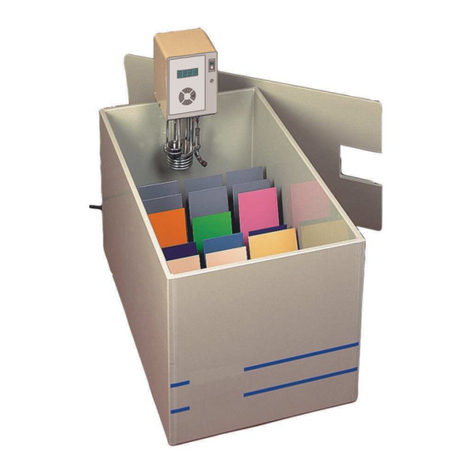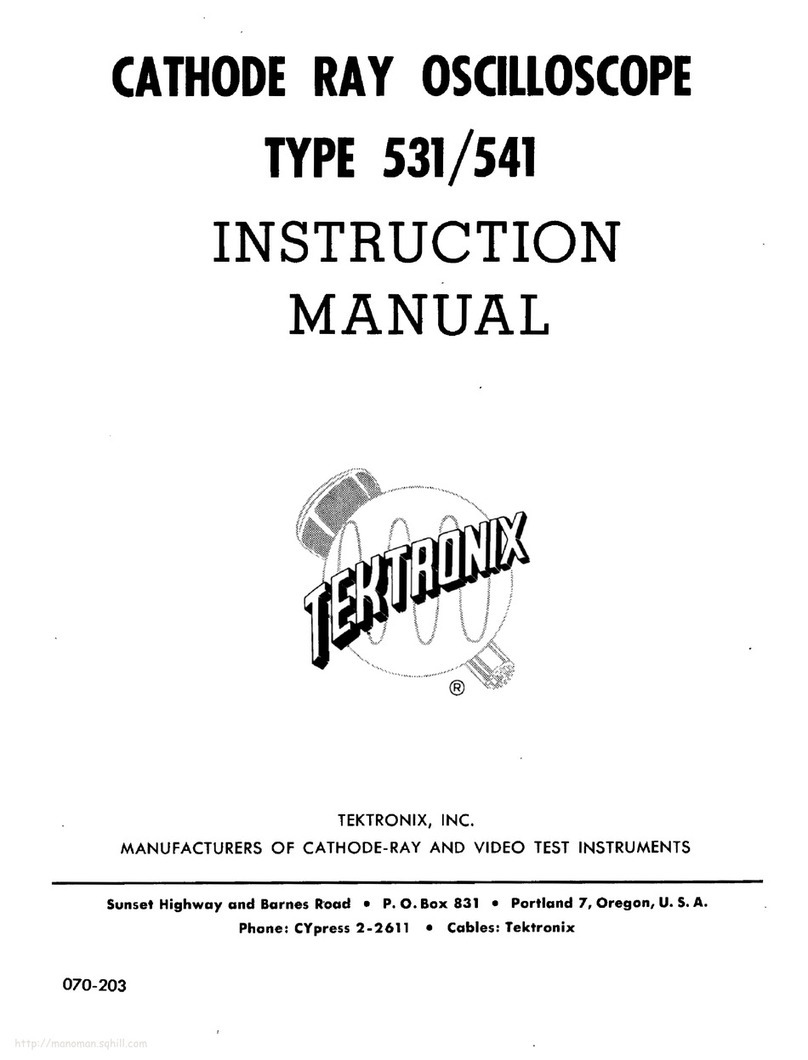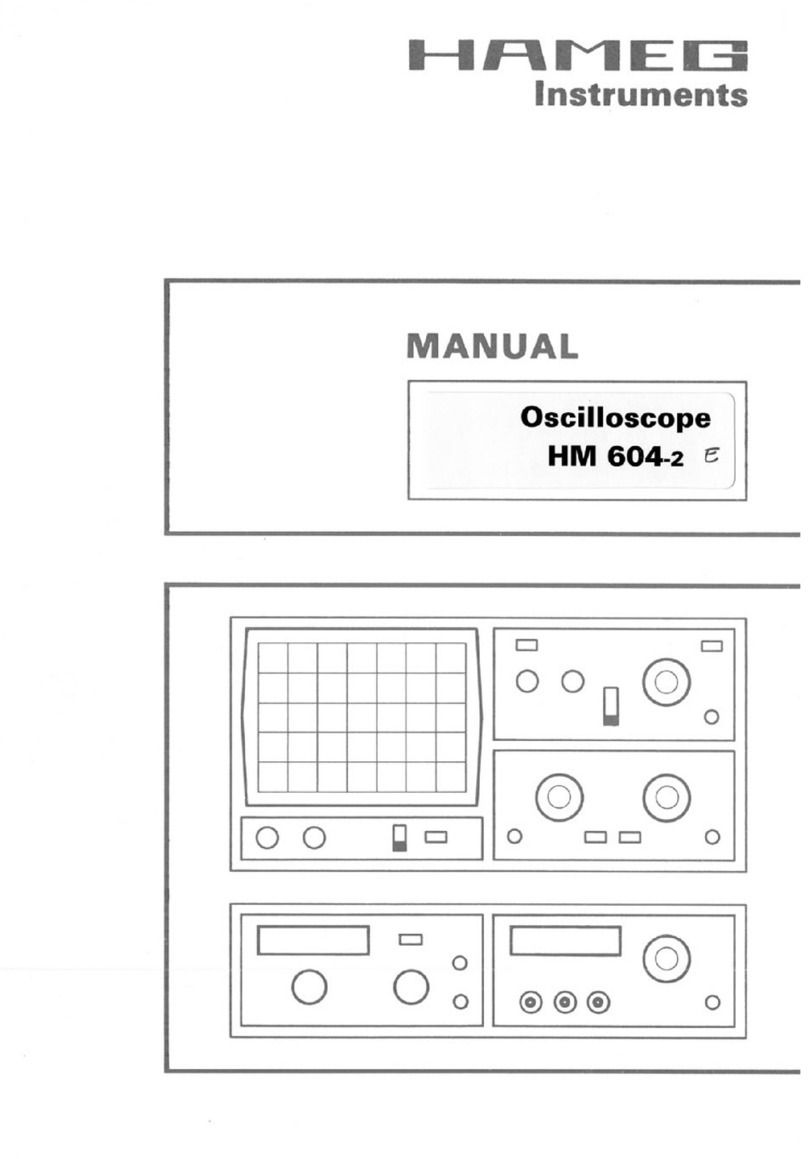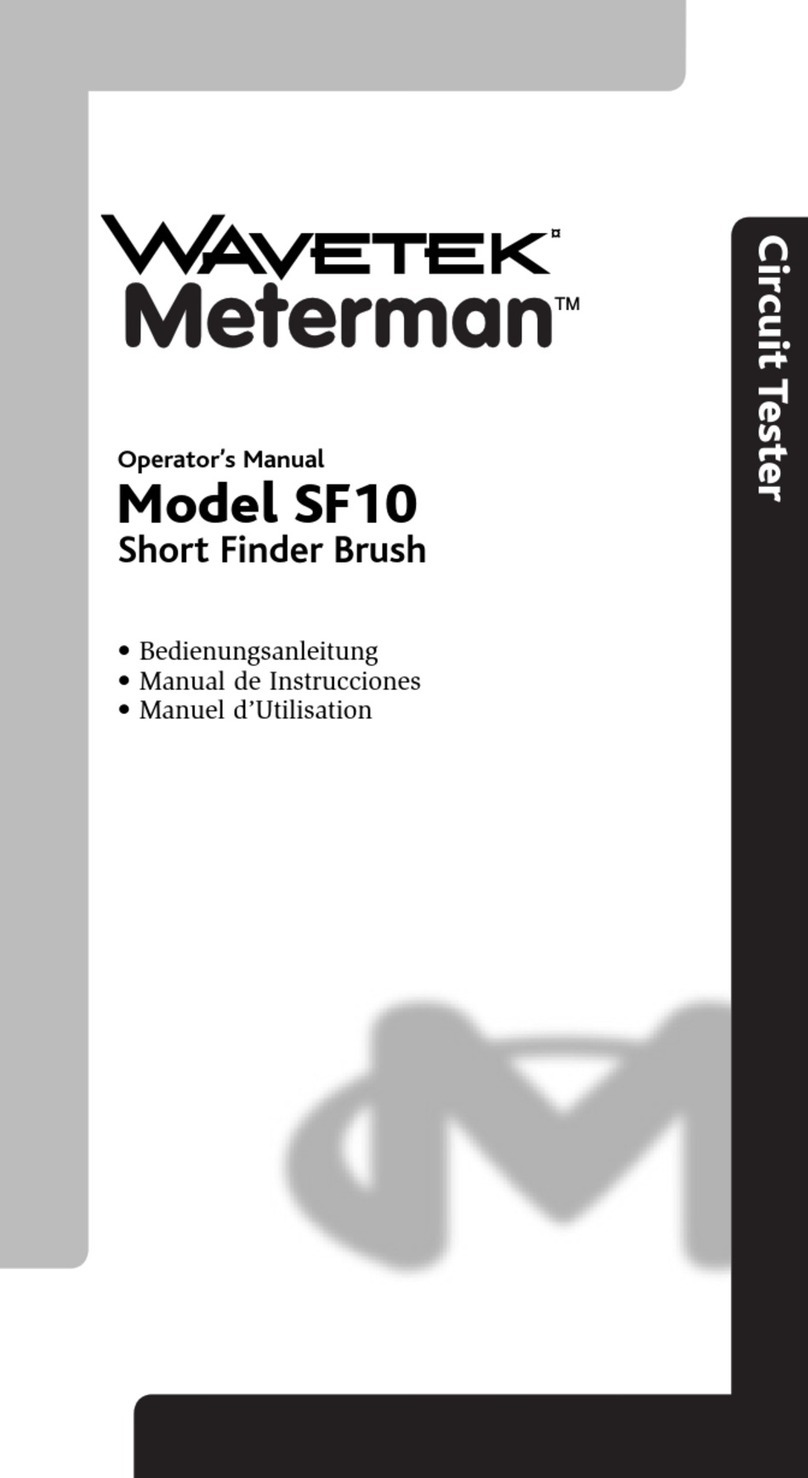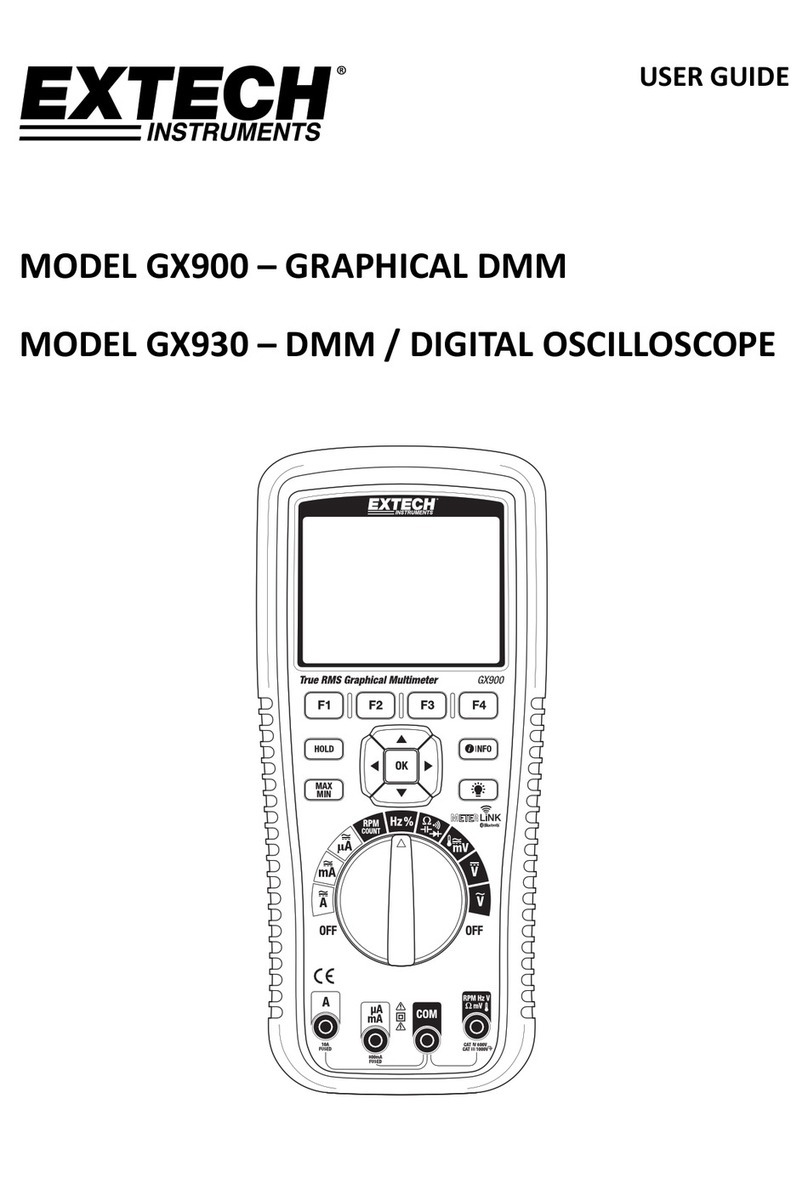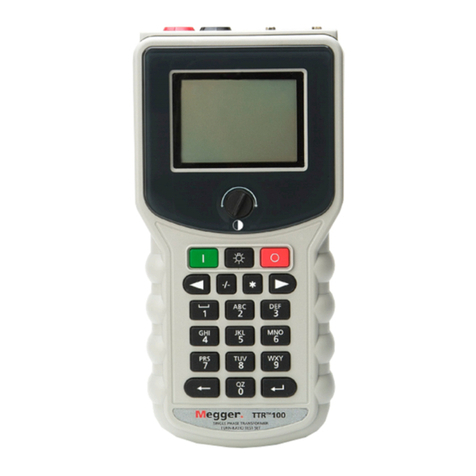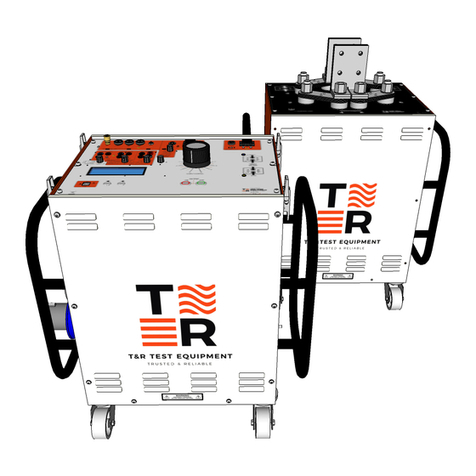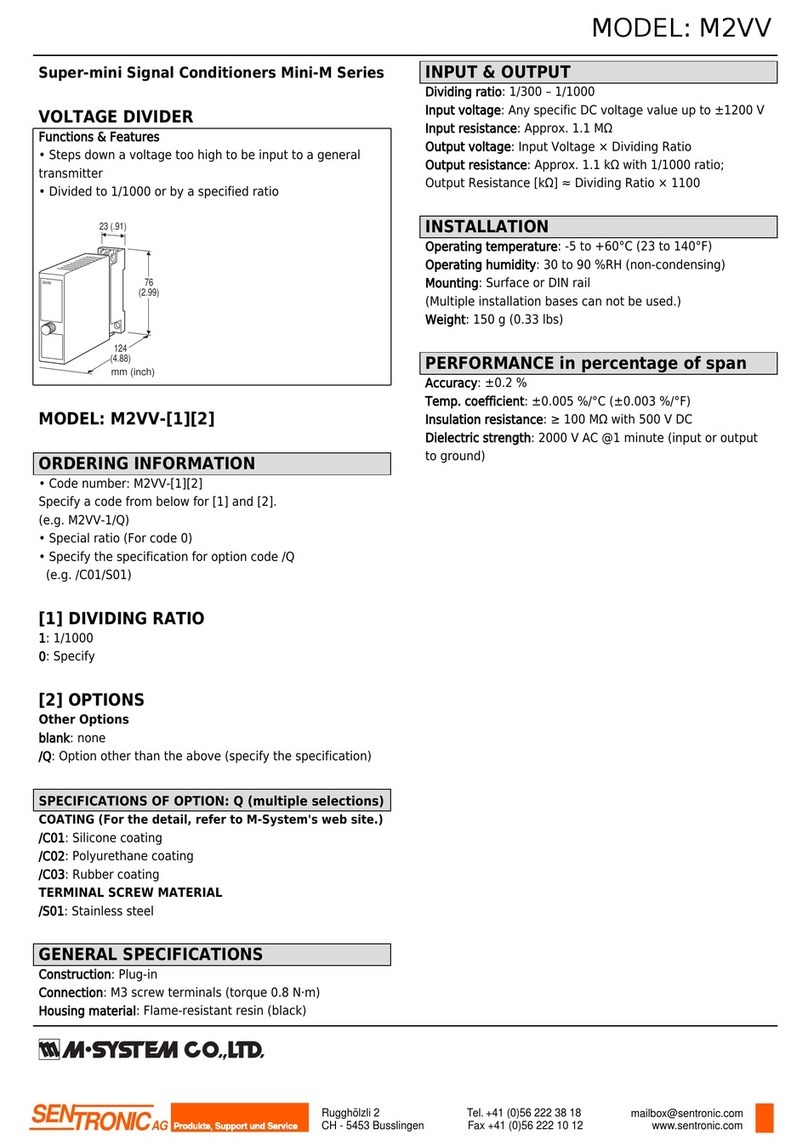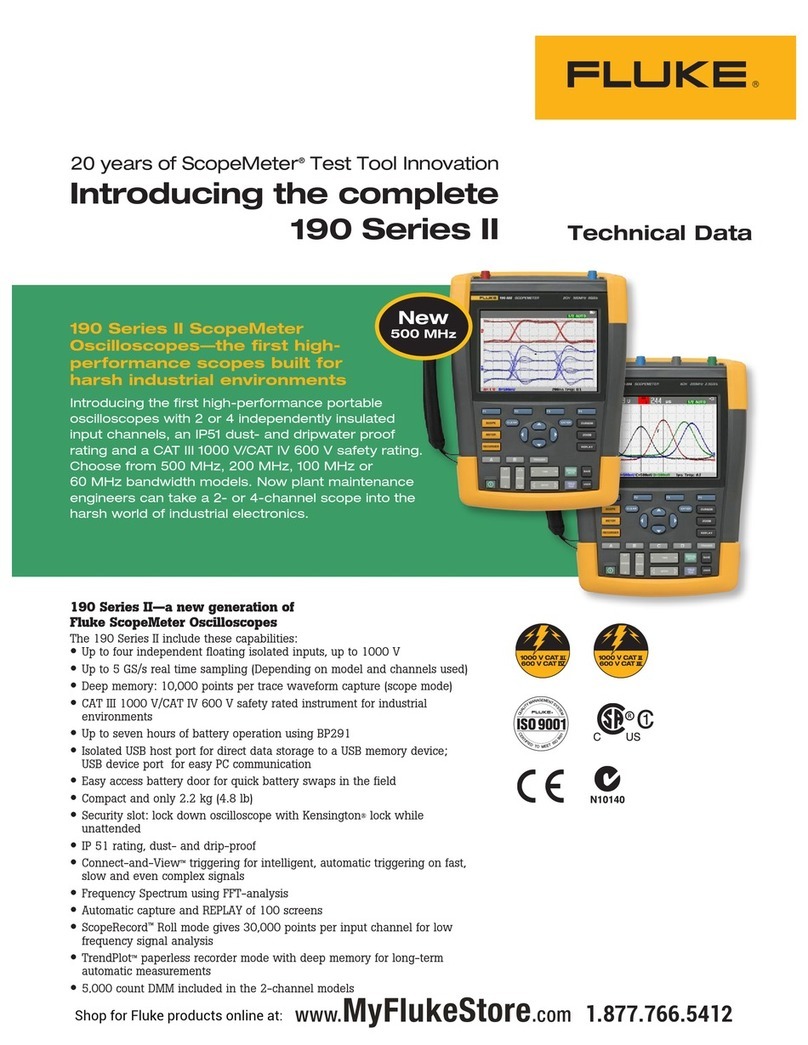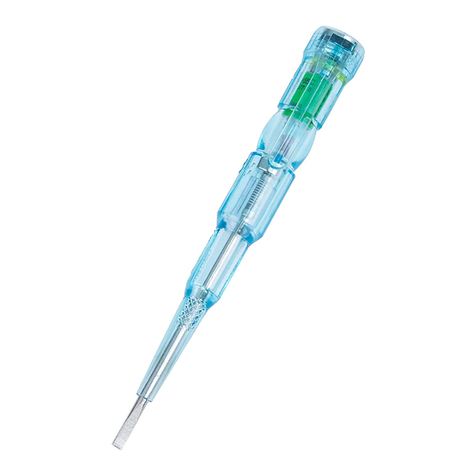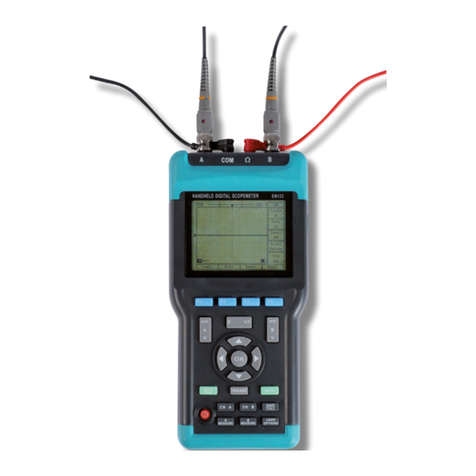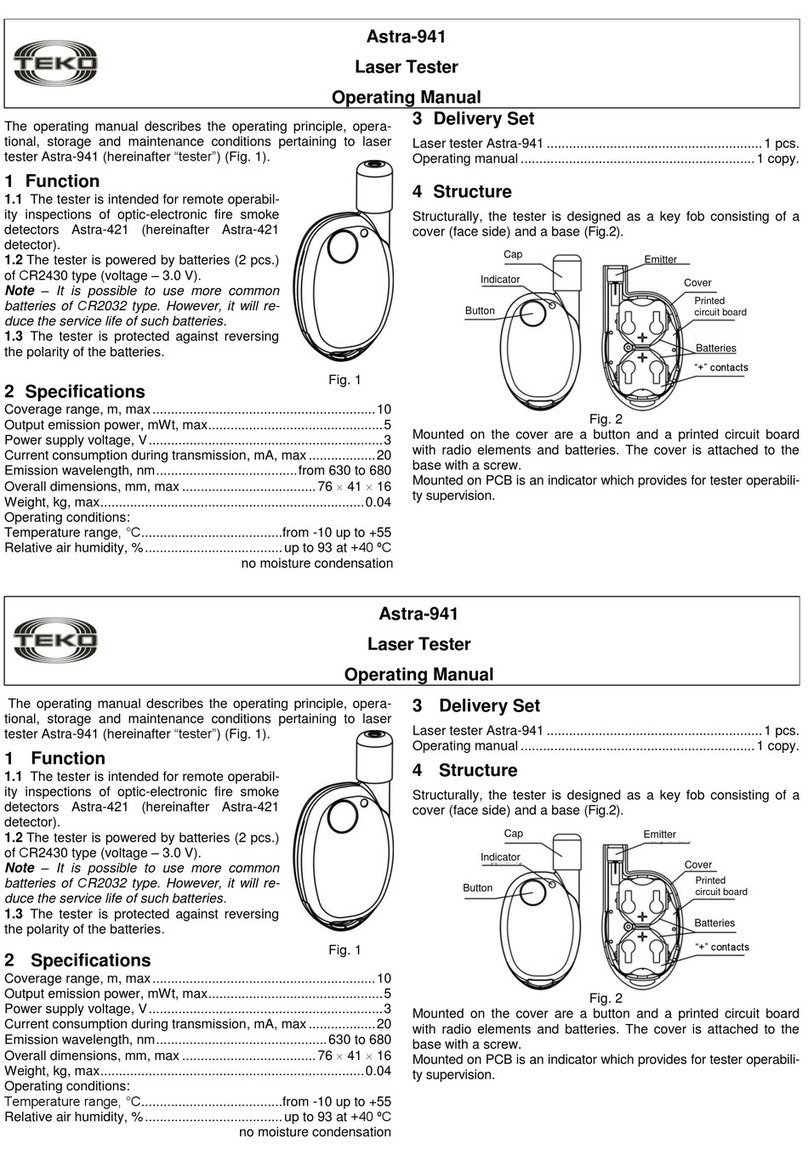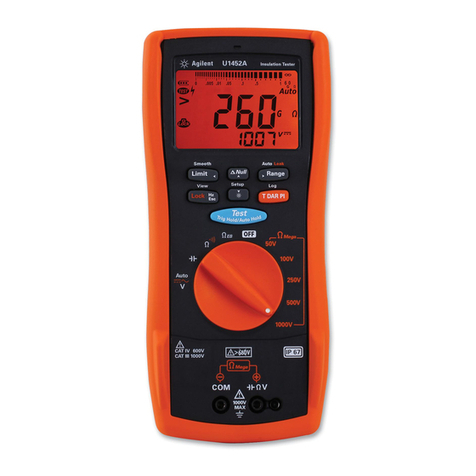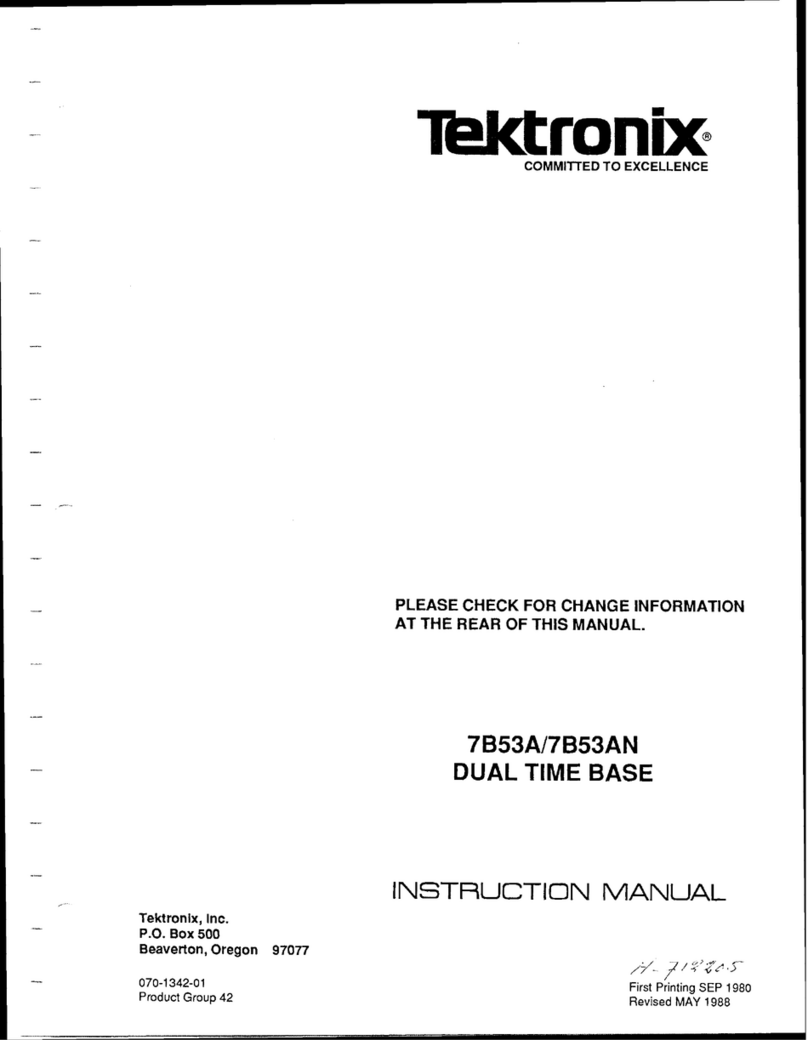IBM 727 Manual

> '
IBM
TRADE MARK
727
magnetic tape unit
and tester
electronic d ata - processing machines
customer engineering
manual of instruction
Form 22-6681-0

Copyright 1956 by
International Business Machines Corporation
590 Madison venue, New York 22, N. Y.
Printed in U. S. .
Form 22-6681-0

CONTENTS
727 M GNETIC T PE UNIT ND TESTER, MODELS I ND II
Page Page
1.0 INTRODUCTION 711.0 MISCELL NEOUS 36
11.1 Charts 36
2.0 M CHINE SPECIFIC TIONS 811.2 Select and Ready 75. 01 36
2.1 Tape Drive 811.3 Read-Write Status 75.02 36
2.2 Tape 811.4 Tape Indicator 75.03 37
2.3 Humidity Considerations 811. 5 Tape Break Indication
2.4 Capacity and Speed 9 75.03 37
11.6 Starting from Load Point
3.0 PRINCIPLES OF STORING 75.04 37
INFORM TION 10 11.7 Start, Stop, and Reverse
3.1 Magnetic Theory 10 Control 75. 05. 01 37
3.2 NRZI System 10 11.8 Read Pre- mplifier 75.06
11. 9 Writing on Tape (Only One 38
4.0 PHYSIC L DESCRIPTION 12 Bit Position Considered) 38
4.1 Tape Motion 12 11.10 Write Echo 39
4. 2 Moving Coil ssembly 12 11.11 Writing a Check Character
4.3 Split Idlers—Tape lign (LRCC) 39
ment 13 11.12 Erasing 39
4.4 Head ssembly 13 11.13 Rewind 75. 08 39
4. 5 Reel Drive Clutches 15 11.14 File Protection 40
4. 6 Vacuum Columns and Vacuum 11.15 Forward and Reverse
Operated Switches 16 Switch 40
4. 7 Motor Drive 17 11.16 Machine Ready 75.09.03 40
4. 8 Time Delay 17 11.17 Reset 75.09.04 40
4. 9 Capstan Retracting Mecha 11.18 Reel rm Latch 40
nism 17
4.10 Head-Raising Mechanism 18 12.0 RESUME OF LINES ENTERING
4.11 Reel Door Interlock 18 ND LE VING T PE UNITS 41
4.12 File Protection 19
4.13 Power Considerations 19 13. 0 SOURCES OF TROUBLE 43
4.14 Machine Reel Sensing rm 19 13.1 Signal Drop Out 43
13.2 Noise Pulses 43
5.0 P NEL BUTTONS ND LIGHTS 13.3 Skew 43
(FIGURE 5) 20 14. 0 SERVICE IDS 46
6.0 T PE H NDLING 21 14.1 Fuse Replacement
14.2 Erase Head Polarity and 46
7.0 LO D-REWIND OPER TION 23 Stopping Distance 46
7.1 Initial Conditions 23 14.3 Moving Coil Circuitry
14.4 Checking for Reversal 47
8.0 MOTION CONTROL 30 Failures 47
801 Moving Coil Circuit 30
8.2 Forward-Reverse Control 30 15.0 REMOV L, SSEMBLY
ND DJUSTMENT
9.0 UNLO D OPER TION 31 PROCEDURES 48
15.1 Removal of Head ssembly
10.0 HIGH-SPEED REWIND 33 (P/N 333072) 48

CONTENTS (continued)
15.2 djustment of Head
ssembly (Figure 18)
15.3 HeadWear
15.4 Removal and djustment
of Tape Cleaner
15. 5 Drive Clutch ssembly
15.6 Vacuum Unit
15. 7 Drive Capstan
Mechanism
15. 8 Moving Coil Unit
15.9 Miscellaneous djust
ments
16.0 LUBRIC TION
SPECIFIC TIONS
72 7 M GNETIC T PE
22.0 INTRODUCTION
22.1 Mechanical Principles
22.2 Electronic Circuits
23.0 REL Y CIRCUITS
23.1 Load, In Low-Speed
Rewind rea
23.2 Manual Control of Tape
Motion
Page
17.0 PREVENTIVE M INTEN NCE 63
18. 0 TYPE 727 REL Y WIRING
DI GR M 65
19.0 727 T PE DRIVE TESTER 79
19.1 General 79
19.2 Purpose of Switches and
Hubs 79
19.3 Oper at ions 81
19.4 Test Procedures 83
20.0 PURPOSE OF REL YS 85
21.0 T PE DRIVE CEM LISTING 91
ND TESTER, MODEL III
23.3 Tape Motion Under
Calculator Control 120
23.4 High-Speed Rewind 121
23.5 Unload 121
24.0 PURPOSE OF REL Y POINTS 122
25.0 DJUSTMENTS 128
25.1 Capstan In and Capstan
Out Sensing Switches 128
Page
48
p50
50
51
52
54
55
59
62
UNIT
117
117
118
119
119
120

NOTICE
THE text and illustrations in this manual have been prepared
for teaching purposes and as an aid for learning the 727 Tape
Drive and the Tape Drive Tester. ll material was prepared
from information relative to production at a given level. En
gineering changes may alter logic and machine functions. Of
course, these engineering changes could cause the machine’s
production to be at a different level from that described by this
manual. Therefore, the use of this manual as a reference is
subject to changes in the machine.
One change should be made in the Type 727 Magnetic Tape
Unit Systems book accompanying this write-up for the systems
and write-up to be at the same level, logically. This change
should be made on systems page 75.10. 01 as follows:
1. Remove 12 U and the lk-ohm potentiometer and 500-
ohm resistor tied to the 12 Un/o point.
2. dd a jumper from 12 Un/c to terminal 3.
Doing this removes 12 Un/o and shortens 12 Un/c. Ma
chines in the field should already have been changed.
BBREVI TIONS
The following abbreviations are used throughout this manual.
caps. capstans
EOT end of tape
EMF electro motive force
go-fb go/forward-backward
LP latch pick
L.P. load point
LT latch trip
LRCC longitudinal redundancy check character
usee microsecond
ms millisecond
mtr. motor
mv millivolt
MV multivibrator
NRZI non return to zero
pt. point
PU pick up
R/W read-write
sel select
SS single shot
TDT tape drive tester
TI tape indicator
TU tape unit
tgr. trigger


72 7 M GNETIC T PE UNIT, ND TESTER
MODELS I ND II
1.0 INTRODUCTION
The Type 727 magnetic tape unit is designed to provide storage and reading of
large amounts of sequential information on a magnetic tape. It is controlled largely
from an external source with certain automatic functions contained within the unit.
Power for electronic circuits and drive motors is obtained externally while power
for relay circuitry is self-contained. The unit is normally connected to EDPM equip
ment as an input/output device.
reel of magnetic tape is an economical storage medium because it can be used
repetitively and can contain aboutT, 600,000 characters in records of variable length.
The functions of the tape drive are:
Writing
Reading
Backspacing
Erasing
The mechanism provides for:
Easy loading and unloading
Fast rewind of tape
Recognizing the physical ends of the tape, as well as tape breaks.
The tape drive may be operated by automatic or manual control.
7

2.0 M CHINE SPECIFIC TIONS
2.1 T PE DRIVE
The specifications of the tape drive are as follows:
1. Weight: 911 lbs.
2. Dimensions: 29-l/4M deep x 69" high x 28-1/2" wide.
3. Voltage: 208 three phase.
4. Vacuum: 8" water.
5o Power requirements: 1148 watts average (about 1400 watts during high-speed
rewind).
20 2 T PE
The physical medium upon which binary information is stored is a layer of mag
netic oxide material coated on one surface of a plastic tape. The tape is nominally
1/2 inches wide and is arbitrary in length up to 2400 feet wound on a reel 10-1/2
inches in diameter.
The specifications on the physical size of tape are as follows:
1. The width is .498" ± .002" at 50% relative humidity and 70°F temperature.
2. The total thickness is .0022" (+.0003", -.0004").
3. The cellulose acetate base is nominally .0015" thick; the magnetic layer,
. 0006" thick.
The magnetic oxide tape used in EDPM equipment is of the highest quality manu
factured. The control and care in the manufacturing of the tape is carefully super
vised by the manufacturer. Each reel is tested twice by IBM before it is shipped to
the customer 0
The aim of this intense effort is to eliminate any conditions leading to an error in
the recording of information or in the reading of information when using the IBM mag
netic tape equipment
2.3 HUMIDITY CONSIDER TIONS
The tape is cellulose acetate. This plastic material is dimensionally unstable
insofar as relative humidity is concerned. In the range of 20% to 80% relative hu
midity, the lateral dimension can change as much as .0067 inches; operation beyond
this range introduces even greater changes. This change in lateral dimension pre
sents a problem of storing and using the tape on the 727 when the relative humidity
varies over a wide range. The accurate guiding of the tape to the sensing heads de
pends upon the width of the tape. change of . 006 of an inch may cause misalign
ment errors.
Proper storage of the reel of the tape is, therefore, necessary to obtain satis
factory performance. If the tape is stored where the humidity ranges between 40% to
60% relative humidity, the design tolerances are maintained. If the tape is stored in
an atmosphere outside the specifications, the probability of errors increases.
8

Temperature variations are secondary in comparison to humidity. If the tape is
stored at about 70°F, no departure from the specified width should be observed. See
6.0 "Tape Handling.”
2.4 C P CITY ND SPEED
It is possible to write information in any of seven tracks across the face of the
tape. Each track is independent of every other track and is associated with one read-
write coil. Looking at the top of the tape, the tracks appear similar to Figure 1.
The tape is fed through the machine at a speed of 75 inches/sec. and the bits are
written approximately every 67. 2 usee. This means that about 200 bits may be
written in one inch of space. One 2400-foot reel can contain the information on about
20, 000 80-column cards.
Information may be placed on the tape in any configuration of bits desired. The
configuration and interpretation is under control of the external circuitry to which the
tape is attached.
The distance required to start and stop the tape motion must be mentioned when
considering capacity. The combined distance required to stop and restart the tape
motion is about 3/4 inch. Nothing may be written in this space because the tape is
not moving fast enough to allow accurate writing or reading of bits. Therefore, the
number of stops necessary during writing greatly affects the amount of space avail
able for writing information.
9

3. 0 PRINCIPLES OF STORING INFORM TION
3.1 M GNETIC THEORY
magnetic material is one that can be polarized or partially polarized when
placed under the influence of a magnetic field. For every magnetic material, a B-H
curve can be plotted showing the resultant flux densities in the material when placed
in the influence of a varying magnetizing force. If a magnetizing force of ampere-
turns (NI) is slowly increased in the positive direction, the resultant flux density in
a magnetic medium would at first increase rapidly and then slowly attain a steady value
of flux as shown in Figure 2. The phenomenon of attaining a steady value of flux
density is designated as saturation of the magnetic material. When the ampere-turns
are slowly reduced, the flux density also decreases, but at a different rate. This
phenomenon is known as the hysteresis effect. When the magnetizing force is again
zero, the flux density is not equal to zero, but is equal to some positive value, shown
in Figure 2 as point . The amount of magnetic flux remaining when NI is equal to
zero, as denoted by the distance -O in Figure 2, is the residual magnetism in the
magnetic circuit.
If the ampere-turns are reversed by a reversal in current and the current mag
nitude is increased in the negative direction until saturation is again reached and then
once again returned to zero, a negative resultant flux remains (point B, Figure 2).
Thus, by employing suitable circuit techniques, a flux pattern of either positive or
negative polarity can be impressed on a magnetic material.
The schematic sketch in Figure 3a illustrates the storing of bits of information.
The magnetic circuit consists of the laminated ring, the air gap, a shim and the mag
netic oxide on the tape. The ring is made of mu metal. Mu metal has a large mu *
and low retentivity **. The gap has a mu of 1. The oxide has a mu of approximately
7-9, but has a high retentivity in comparison to the rest of the circuit. The half
mil gap is used to force the magnetic lines of force away from the head and into the
magnetic material on the tape.
♦Permeability is the measure of the ability of a magnetic material to con
duct lines of flux. It is designated by the Greek letter mu (u) and is numerically
equal to the ratio of the flux density to the magnetizing force, u = B *■ H. The
mu of air = 1.
♦♦Retentivity is the capacity of a magnetic material to retain magnetism
after the magnetizing force has been removed.
3.2 NRZI SYSTEM
The NRZI (non-return to zero) system of recording binary information on tape is
a system in which the tape is continuously saturated in either the plus or minus direc
tion. change in saturation polarity is called a "one." No change within a given
period of time is called a "zero."
The following is a simplified description of how the NRZI systems function.
The process by which information is stored is called "writing" and the process of
detecting stored information is called "reading."
10

When switch 1 is closed at time T^, current generator E-^ (Figures 3 a and 3b)
cause the current 1^ to flow through the coil as indicated and a flux path is set up as
shown, using the right hand rule. Because this flux path extends into the magnetic
material on the tape, the domains in the material line up in the direction of the flux
path. If the tape is moving at a constant speed of 75 inches/sec., all the area pass
ing under the write head becomes magnetized in the same direction.
If, at time T2, switch 2 is closed and switch 1 is open, current generator E2
causes current I2 to flow through the opposite write coil as shown. This causes the
flux path to be reversed and the domains in the magnetic material line up in the
opposite direction. Because the switching time is very short, the tape moves only a
very short distance during the time the reversal takes place. This process consti
tutes writing a binary one bit on the tape. If, at a time T3, another reversal is made,
then another binary one has been written.
If, at time T4, no reversal is made, then a binary zero has been written. Thus,
observe that if a reversal in flux is made at any time, a binary one bit is written and,
if no reversal is made, a binary zero bit is written.
Figure 3c illustrates the magnetic material on the tape as being a series of tiny
bar magnets placed end to end. Where the change in flux occurs, there are like
poles; where no change occurs, there appears to be a long magnet.
The reading of a binary one is simple in principle. The reading circuits make
use of the fundamental fact that voltage is induced in a coil whenever there is a time
rate of change of the flux linking the turns of the coil. This principle can be stated
in the following fundamental equation: e = Nd^/dt.
s the tape is passed over the head, a voltage is induced in the windings on the
head when a reversal of flux pattern is encountered. This voltage is taken from one
coil and routed to amplifiers and storing circuits.
binary one is sensed as the presence of a voltage pulse at the terminals of the
coil. (This voltage pulse is produced by a flux change in either direction.) The
absence of a voltage pulse (no change in flux) indicates a binary zero.
The information stored on the tape may be erased by saturating the magnetic
material all in the same direction. This is done by a separate erase coil and head
described in section 4.4.2.
The advantages of the NRZI system over a pulse system are:
a. High inherent density. Binary ones can be written closer together than in a
pulse type system0
b. High output when reading. maximum change of flux occurs from minus to
plus saturation.
c. Simplified erasing technique. Erasing to saturation is simpler than erasing
to zero flux.
11

4. 0 PHYSIC L DESCRIPTION
The 727 magnetic tape unit is built on a frame about 2f x 2T2" x 5f3-3/4M. Mounted
on the front of the frame are the reels, vacuum columns, read-write and erase heads
and the tape driving pulleys and capstans. The buttons and lights used to control the
unit manually are mounted on a door forming part of the cover over the front. Fig
ure 4 is a sketch of the machine front without covers and Figure 5 is a sketch of the
configuration of the panel buttons and lights.
4.1 T PE MOTION
Tape is transported from the left or file reel through the read-write and erase
heads to the right or machine reel. Because the reels containing the tape are rela
tively sluggish in action, it would be practically impossible to start and stop the tape
efficiently if it were driven directly from the reels. Therefore, a buffer storage area
is provided in the form of vacuum columns below the reels. In each of these columns
a loop of tape is retained and the tape is driven through the read-write and erase heads
by a friction drive and pulley combination. s tape is drawn from one column, it is
replenished periodically by rotating the associated reel in the proper direction. s
tape is driven into the opposite column, the associated reel is periodically caused to
turn in the correct direction to wind up the tape. The control of the reel motion and
the reel drive will be discussed further on. Figure 6 illustrates the path of the tape
from one reel to the other. The next paragraphs describe the mechanics of the tape
transportation mechanism.
The right and left drive capstans turn continuously in the direction shown. To
drive from left to right (forward), the right moving pulley fork pivots to the right
squeezing the tape between the moving pulley and the rotating drive capstan. t the
same time, the left moving pulley fork pivots toward the left drive capstan, but does
not strike it.
To drive from right to left (backward), the left moving pulley fork pivots to the
left causing the tape to be squeezed between the left moving pulley and the left drive
capstan. t the same time, the right moving pulley moves toward the right drive
capstan but does not strike it.
To stop tape motion, the moving pulley forks pivot in the opposite direction caus
ing the tape to be squeezed between either the right or left moving pulley and the right
or left stop capstan, respectively. If the tape is moving from left to right, it is
stopped at the left stop capstan. If the tape is moving from right to left, it is stopped
at the right stop capstan.
4.2 MOVING COIL SSEMBLY
Figure 7 is a sketch of the linkage operating the moving pulley assemblies. The
basic motion is imparted to the system by the moving coil. This coil is suspended in
the field of a permanent magnet. Passing current through it causes it to move very
rapidly either up or down, depending on the direction of current flow.
If the coil is caused to move upward, called the "start" position, the linkage
causes both moving pulley forks to pivot toward their respective drive capstans. If
12

the coil is caused to move downward, called the "stop" position, both moving pulley
forks pivot away from their respective drive capstans.
4.2.1 Forward-Reverse Magnet ssembly
For only one moving pulley to cause driving at a time, it is necessary to bias the
linkage to the right or left. This is accomplished by using the forward-reverse mag
net assembly.
When the forward magnet is energized, the linkage is biased to the right. When
the moving coil is then energized in the upward direction, the right moving pulley
makes contact with the right drive capstan but the left moving pulley is held away from
its drive capstan. If the moving coil is energized in the down direction, the left mov
ing pulley is driven against the left stop capstan but the right one is held away from
its stop capstan.
The reverse happens when the reverse magnet, instead of the forward magnet, is
energized. With power on, the moving pulley linkage is always in one of four definite
positions: forward stop, reverse stop, forward start, reverse start. The normal
position is considered to be forward stop.
4. 3 SPLIT IDLERS—T PE LIGNMENT
To assist in maintaining proper alignment of the tape, the split idlers are used.
They are located just to the right and left of the head assembly on the upper head
plate. These split idlers keep the tape parallel to the main plate and a fixed distance
from it, regardless of variation of width of the tape. To avoid too complicated an
alignment system, it was preferred to maintain the alignment of one edge of the tape
only and let the other move freely. Figure 8 is a view of the split-idler assembly.
The front edge of the tape is held a fixed distance from the front plate by the stationary
portion of the idler. The rear portion of the idler is free to slide on the shaft and is
held in continual contact with the rear edge of the tape by spring tension. The entire
assembly, shaft and all, rotates within sleeve bearings in the associated housing.
When the tape expands in width, it spreads the split idler. The track farthest
away from the front edge of the tape is, therefore, most subject to misalignment when
the tape expands or contracts laterally between the time of recording and the time of
reading. If the distances of the two split idlers from the main plate are the same, a
minimum of skew can be expected. (The problem of skew is discussed in section 13.3.)
Measurements have shown that split idlers can be very effective in reducing skew to
a minimum. lso, alignment between machines can be very closely controlled.
4.4 HE D SSEMBLY
The assembly generally referred to as the head assembly is made up of two ver
tical plates, the lower of which is stationary. The upper plate is built to move up and
down under power. On the lower plate are located the read-write head assembly,
the tape-break-light assembly, and the tape cleaner. On the upper plate are located
the erase head, load point, and end-of-tape photo-electric-cell assemblies, the split
idlers, and pressure pad.
13

To allow installation of tape by the operator and also to provide freedom of move
ment during high-speed rewind, the upper plate is moved upward leaving a gap of
about 27/32 inch between the erase head and the read-write head assembly. During
the time when tape is being transported through the machine for reading or writing,
the upper plate is down causing the assemblies to be in close contact with each other.
40 4. 1 Read-Write Head ssembly
The read-write head assembly contains the seven read-write heads in laminated
form, one behind the other. The tape passes over the head assembly, oxide-side
down. The entire head assembly is removable as a unit; connection to the read-write
coils is made through a multi-pin plug at the bottom. The read-write head assembly
should not be removed from the lower plate. It is set at the factory.
4.4.2 Erase Head
The erase head is located above and 3/8" to the left of the read-write head assem
bly. It consists of one large coil and core covering the entire width of the tape. It
saturates all tracks in one direction during writing just ahead of the portion being
written on. This process erases the information previously written. The head is
kept very close to the read-write assembly vertically. pressure pad is installed to
the right of the erase head to keep intimate contact between the tape and the read-
write head.
s previously stated, the erase head is mounted on the upper plate and moves
up during high-speed rewind time and when the machine is in an unload status.
4.4.3 Load Point Sensing
To indicate the beginning of the usable portion of the reel of tape, a small re
flective spot is placed on the tape (plastic side). This spot is 3/16" x 1" and is
placed on the front half of the tape width, 1/32" from the edge. It should be located
about ten feet from the physical end of the tape to allow sufficient wind-up on the ma
chine reel.
This reflective spot is sensed by a photo-electric pell arrangement shown in
Figure 9. The light from the front bulb is reflected from the spot to the photo cell
directly to the right of it. This, in turn, operates control circuitry to stop the tape
unit.
4.4.4 End-of-Tape Sensing
The end of the usable portion of the reel of tape is indicated by an identical re
flective spot placed at least 14 feet from the physical end of the tape. This spot is
placed on the plastic side of the tape 1/32" from the back edge. The rear bulb and
photo cell sense this reflective spot in the same manner that the load point is sensed.
4.4.5 Tape Brèak
During high-speed rewind, the machine should stop if the tape breaks. n in
dication of tape breakage is provided by directing a light source from the under side
of the tape to the end-of-tape photo cell. Tape normally passes between the light
14

source and the cell. However, if the tape breaks, the light source strikes the cell
and stops the machine.
4. 5 REEL DRIVE CLUTCHES
Each tape reel is mounted on a hub protruding from the upper front plate of the
machine. This hub contains an expansion rim that grips the reel tightly when the
locking screw in the center of the hub is tightened. The hub is mounted on a shaft
extending through the upper front plate and to the rear. This shaft is driven by two
continuously running three-phase motors through two magnetic powder type clutches;
one for forward motion and one for reverse motion. third clutch is used as a
brake.
Figure 10 shows a single clutch unit. The innermost part is the rotor that is
keyed to the shaft. Surrounding this part is the clutch housing with pulley grooves
cut in its circumference to make it free to turn on the shaft. Within the clutch hous
ing is embedded a coil, the connections for which are brought out to slip rings on one
end of the housing. In the space between the rotor and the housing is a mixture of
magnetic iron powder and graphite.
When current flows through the coil in the housing, flux is produced. It solidifies
the iron and graphite mixture and causes the rotor and housing to be essentially locked
together. Therefore, if the housing is made to turn continuously through pulley action
from the motors, the rotor does not move with it unless current is flowing through the
coil. s soon as current is caused to flow through the coil, the rotor begins to move
with the housing and to turn the hub and reel at the front of the machine.
Because of the inductance of the coil, current in it builds up gradually and, be
cause torque transmitted is proportional to current (and flux), a quite smooth accel
eration is produced. This smoothness is essential because shock in the reel causes
slippage of the tape on the reel, and eventual breakage. The magnetic powder clutch
was selected here for its ability to produce quite smooth accelerations and large
torques with relatively small control currents. The iron-graphite mixture does not
wear the clutch parts but only tends to polish them. To hold the iron-graphite mixture
in the vicinity of the flux gap, a series of labyrinth type ridges were designed into the
clutch parts. These ridges assist centrifugal force to return the powder back to the
magnetic gap.
ll three clutches are mounted on the same shaft with all rotors keyed to it. The
front clutch has a stationary housing and thus serves as a brake when necessary. The
middle clutch housing is driven in a clockwise direction and serves as a forward drive.
The rear clutch housing is driven in a counterclockwise direction and serves as a
reverse drive.
Control of the clutch energization is discussed under section 7. 0.
Each brake may be released when the machine is unloaded by depressing the re
lease button located below and to the left of the file reel. The left button causes de-
energization of the left brake clutch and the right button causes de-energization of the
right brake clutch.
15

4. 6 V CUUM COLUMNS ND V CUUM-OPER TED SWITCHES
The vacuum columns are vertical columns of rectangular cross section. The in
side dimensions are 2-1/2" x .510 (+ .002", - .000"). The front face of the vacuum
column is transparent so that tape can be observed at all times. The top of the
vacuum column is open and the lower end is connected to a manifold leading to a
vacuum pump that maintains a vacuum of about eight inches of water. Tape is allowed
to hang in the columns in such a way that the oxide surface of the tape strikes the sides
of the column only at the edges of the semicircular loop formed. Because of this ac
tion, vacuum is maintained below the loop and atmospheric pressure above it. This
difference in air pressure is sensed by vacuum-operated switches located behind each
column. Pressure is transmitted to each switch via a short tube emerging from a
hole in the column. Each column contains two such holes and associated switches;
one located about 1/3 of the column length from the top and the other about 1/3 of the
column length from the bottom.
The vacuum columns act as a storage area for the tape, allowing tape to be
moved across the head at random, without having to turn the reels simultaneously.
They also put a constant tension on the tape, preventing tape buckle at the head when
starting and stopping.
The tape reel drive clutches are controlled with relay circuitry to produce the
following forward motion results. s tape is pulled past the read-write head by the
drive capstan it is pulled out of the left column. When the loop of tape is pulled
above the upper vacuum switch in the column, the file reel forward (left down) clutch
is energized and the reel turns in a clockwise direction causing more tape to be fed
into the left column. s soon as the loop is again below the upper switch, the left
down clutch is de-energized and the brake applied. This action causes the loop to
oscillate about the upper switch as long as tape is moving past the read-write head.
t the same time, tape is continually being fed into the right column from the
read-write head area. When the loop of tape in this column falls below the lower
switch, the machine reel forward (right up) clutch is energized and the reel turns in
a clockwise direction to pull tape out of the column and wind it on the reel. s soon
as the tape is again above the lower switch, the right up clutch is de-energized and
the brake applied. This action results in the tape loop's oscillating about the lower
switch in the right column. ction of the reels and the tape in the columns is just the
reverse when tape is moving in the reverse direction.
Generally speaking, whenever the tape is between the two vacuum column switches
the associated reel is stopped (neglecting overshoot); when the loop is above the up
per switch, more tape is fed into the column and, when it is below the lower switch,
tape is pulled from the column.
The vacuum column switch is shown in cross section in Figure 11. The pres
ence of a vacuum causes the diaphram to move in a direction that transfers the con
tacts of the switch. For greater reliability, two sets of contacts are used in parallel.
bellows-type vacuum switch is mounted on the manifold between the two col
umns. It is used to prevent normal machine functions until the vacuum is maintained
at a certain level. This is named the vacuum safety switch.
16

t the bottom of each vacuum column, separating the column from the manifold,
is a flapper valve. This valve is similar to a door, held open under spring tension.
rush of air down the column strikes the flapper valve and closes it. Thus, the
flapper valve and its associated microswitch, give an indication as to whether tape is
in the vacuum column. When tape is in the column, very little air passes down the
column and spring tension pulls the flapper valve open. When tape is removed from
the column, or is broken, the rush of air downward closes the flapper valve and its
microswitch.
djustments of all. the switches associated with the vacuum columns are covered
under "Removal, ssembly and djustment Procedures."
4. 7 MOTOR DRIVE
The reel drive clutches are driven by two 1/4 HP, 30, 220v, C motors (1140
RPM), one providing forward motion and the other providing reverse motion. Fig
ure 12 is a front view of the drive motor and pulley arrangement.
The forward drive motor is located in the lower right-hand corner and is con
nected to the two center clutches by two V-belts adjacent to each other.
The reverse motor is located in the lower left-hand corner and is connected to
the two rear clutches in the same manner as the forward motor.
To provide very fast motion of the reels during high-speed rewind, an additional
motor (1/12 HP, 30, 208v, C, 3450 RPM) is provided in the upper left hand corner.
This motor is coupled to the file reel shaft and during normal tape motion is merely
turned with the file reel shaft. However, when the machine goes into a high-speed
operation, this motor drives the file reel shaft at a high rate of speed. t this time,
none of the magnetic clutches are energized.
The capstans are driven by a 1/10 HP, 30, 220v, C motor running at 1300 RPM.
This motor is turned off when the capstans are retracted.
4.8 TIME DEL Y
The time delay and its drive motor are located on the relay gate. This mecha
nism delays machine operation at the end of a high-speed rewind to allow the reels
time to stop before tape is loaded into the columns. When the motor starts running,
it drives an operating arm by means of a reduction gear train. fter a given time the
arm operates a microswitch, referred to as the time delay point. s long as power
remains on the motor, the operating arm holds the time delay point closed. When
power is removed, the arm returns to a home position under spring tension. The
length of the time delay can be set with a calibrated dial on the front of the assembly.
4. 9 C PST N RETR CTING MECH NISM
While unloaded and while high-speed rewinding, the drive capstans must be re
tracted to allow free passage of the tape past the read-write head area. This opera
tion is accomplished with a linkage operated by a solenoid at the right of the machine
(Figure 13).
17

When this solenoid is energized, the horizontal shaft is rotated counterclockwise
(as viewed from the left side) causing the arm and fork at (4) to push the capstan
mechanism to the rear. lso attached to the solenoid armature is a dash-pot arm
to pull the plunger in a dash pot, cushioning the action of the capstans. Inside the
dash pot is a coil spring that is compressed when the capstans are retracted. This
spring is the source of power to extend the capstans.
The horizontal capstan shaft is driven from the solenoid through a torsion spring.
When the solenoid is unlatched, the dash-pot spring turns the horizontal shaft, and,
through two torsion springs, extends the capstans. Located on the horizontal shaft
are two capstan "out" microswitches and one capstan "in" microswitch. They indi
cate electrically the positions of the capstans.
The solenoid has a latch to hold the solenoid plunger down after it is pulled
down. latch magnet is provided to release the latch and the plunger when desired.
The pulleys driving the capstans remain stationary; the shaft is merely pushed in
and out.
definite sequence of operation is necessary when extending the capstans under
electrical control. The retracting solenoid must first be energized to remove the
pressure from the latch pin. The latch magnet can then retract the latch pin. While
the pin is being held out of the way, power is removed from the retracting solenoid
allowing the capstans to extend. Finally, the latch magnet is de-energized.
4.10 HE D-R ISING MECH NISM
The mechanism that raises the upper portion of the head assembly is directly
behind the upper front plate. It consists of a screw shaft, driven from a friction
clutch and drive chain by a small take-up motor. The take-up motor is mounted
above and between the two clutch shafts.
When the motor is operated in one direction, the screw shaft turns in a clock
wise direction causing the upper head assembly to move upward. When the motor is
operated in the opposite direction, the shaft turns counterclockwise and lowers the
assembly. Microswitches are operated at both limits of travel to indicate the posi
tion of the head cover assembly.
In addition to operating the screw shaft, the motor is geared to each of the brake
clutch housings so that, when the head is being raised, the left stop clutch housing is
rotated in a counterclockwise direction and the right stop clutch housing is rotated in
a clockwise direction. The brake clutches are energized at this time and the reels
are driven in the above mentioned direction. This causes tape to be pulled from both
columns. The opposite occurs when the head assembly is lowered and tape is lowered
into the columns.
4.11 REEL DOOR INTERLOCK
Located in the lower left-hand corner of the reel door is an interlock switch that
is closed when the door is closed. When the door is open, operation of the reel drive
motors is prevented. For convenience of the customer engineer, this switch can be
closed with the door open by pulling out the operating plunger.
18

4.12 FILE PROTECTION
device is provided to prevent writing on a reel of tape if so desired. This
device consists of a groove cut in the rear side of the file reel and an associated
ring which fits into the groove. If the ring is not placed in the groove, writing is
suppressed but reading is allowed. If the ring is placed in the groove, both reading
and writing may occur.
To sense the presence or absence of the ring, a pin protrudes from the upper
main plate. The pin is connected to the armature of a duo relay mounted directly
behind the upper main plate. If a ring is in the groove of the file reel, the pin is
pushed to the rear, causing the relay armature to be sealed. This action transfers
the relay contacts to energize the relay and also allow writing to occur. If the groove
in the reel is empty, the pin is not actuated and the relay is not energized; normal
writing is prevented.
4.13 POWER CONSIDER TIONS
ll external power is brought into the tape unit through a male Cannon plug lo
cated at the lower rear right-hand corner of the tape unit. Power may be jumpered to
other tape units by connecting the female Cannon outlet located beside the male inlet
plug. Drive motor operation requires 30 , 208v, C power. One phase of the 30
supply is used to operate the 48v DC supply located within the tape unit. The 48 volts
is necessary for relay operation.
The +270v, +140v, -60v, -130v, -270v, and +40v are brought from external’
supplies. The 40v is used only to light a thermal light in the event that the tempera
ture within the unit becomes excessive.
4.14 M CHINE REEL SENSING RM
The sensing arm rides on the surface of the tape on the machine reel, and has an
associated contact. When more than a half inch of tape is on the machine reel, the
contact is open; when less than one-half inch of tape is on the machine reel, the con
tact is closed.
The purpose of this arm and contact is discussed under "High-Speed Rewind" in
section 10. 0.

5. O P NEL BUTTONS ND LIGHTS (FIGURE 5)
Located on the reel door of the tape unit are the operating buttons and lights.
These may be operated if the door interlock switch is transferred.
Select Switch. This switch is rotary type, located in the center of the group. It
is used to set the tape unit to any one of the ten addresses. If the switch is set on
address 1, the unit is not selected unless address 1 is selected, and so forth.
Select Light, The select light is turned on when the tape unit is selected and re
mains on until the selection is removed.
Start Button. Depressing the start key causes the machine to be in a ready condi
tion if : (a) tape has been previously loaded into the column, (b) the reel door interlock
is closed, and (c) the tape unit is not in the process of finding the load point (rewind or
load operation).
Ready Light. This light is on if the machine is in a ready status as described
above. Manual control is indicated when the ready light is off provided the tape unit
is not rewinding or loading and the reel door is shut.
File Protection Light. This light is turned on automatically by mounting a pro
tected reel onto the unit. It is on if no file reel is mounted.
Load-Rewind Button. If the reel door is closed, depression of this key causes
loading of the tape into the columns and searching for the load point. If the tape has
been unloaded manually in the fast rewind section of the tape, depressing this key
executes a high-speed rewind before the above operation takes place. This button is
inoperative unless the tape unit is under manual control.
Unload Button. Operation of this button removes the tape from the columns and
raises the upper head assembly regardless of the distribution of tape on the two reels.
If the tape is not at load point when the operator wishes to change it, a load-point
search should be initiated first by depression of the load-rewind button. The tape in
dicator is reset by depression of the unload button. This button is inoperative unless
the tape unit is under manual control.
Tape Indicator On Light. This light is turned on whenever the tape indicator is
turned on by external control when reaching a tape mark while reading, or by reach
ing the physical end of tape while writing. It may be turned off under external con
trol or by depression of the unload button.
Reset Button. This button resets all controls (except the tape indicator) and, in
general, stops any tape operation that has been initiated.
Fuse Light and Thermal Light. The fuse light and thermal light are located on
the inside of the door assembly. The fuse light is nearest the door latch and lights
when either the C or DC fuse bail trips. The thermal light lights when the tern cop
at the top of the tube panel operates from over-heating.
20
Table of contents



